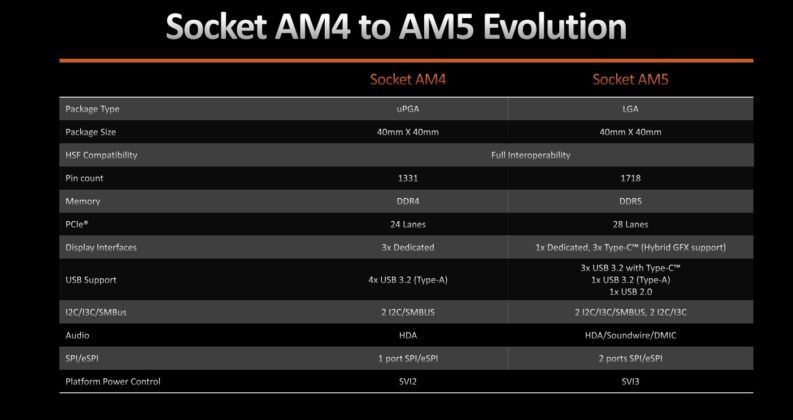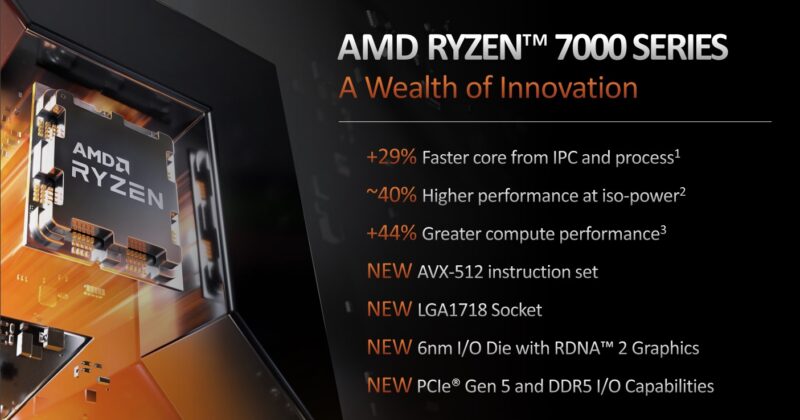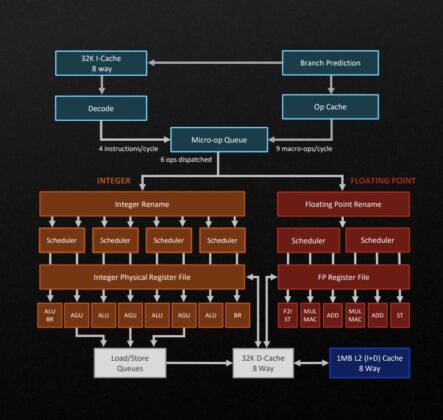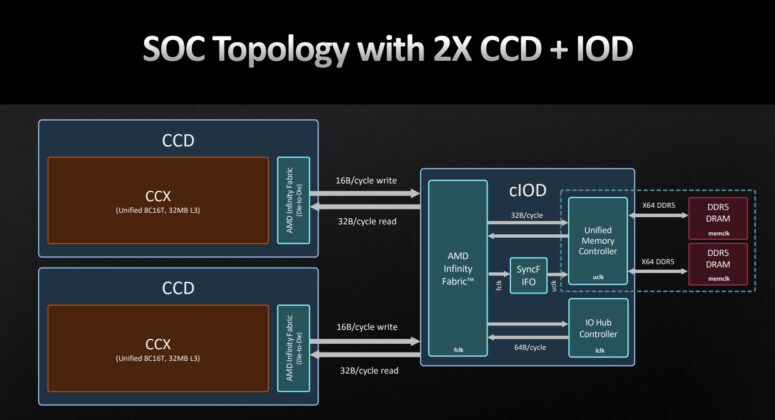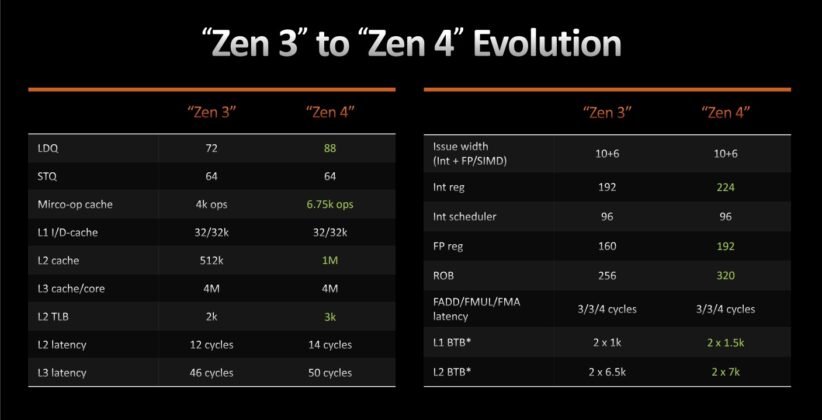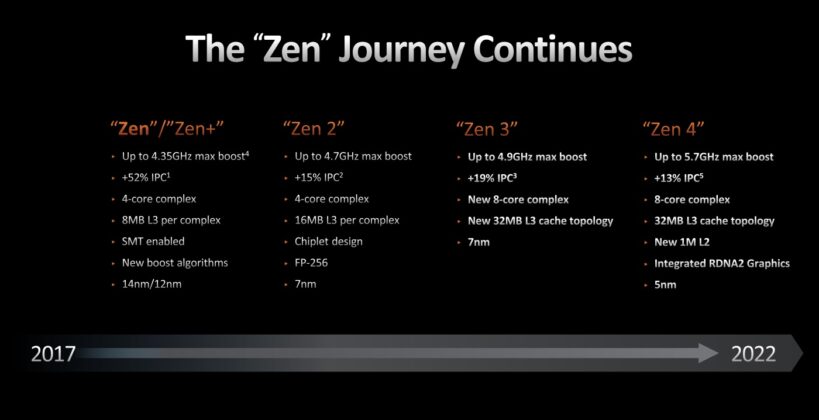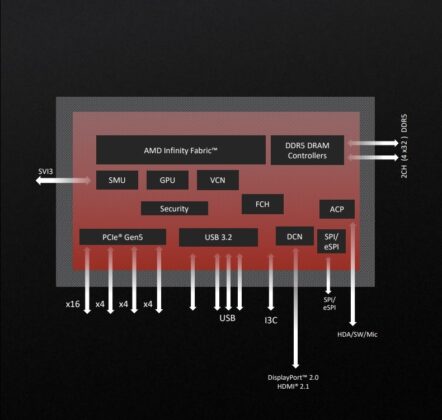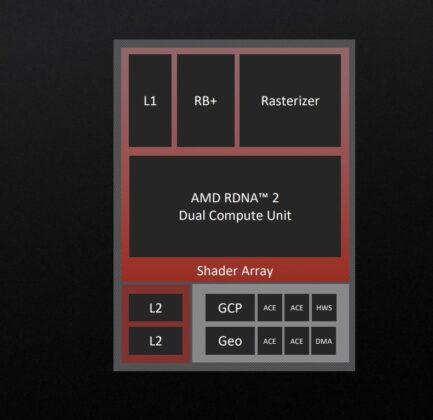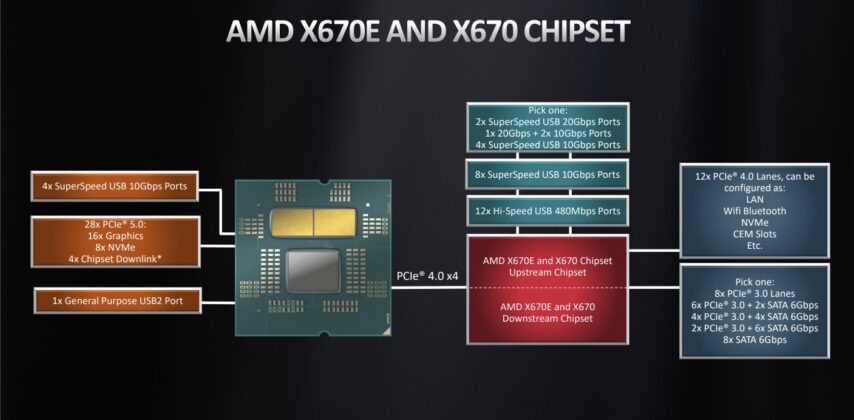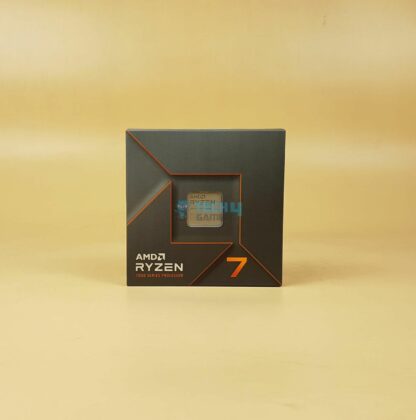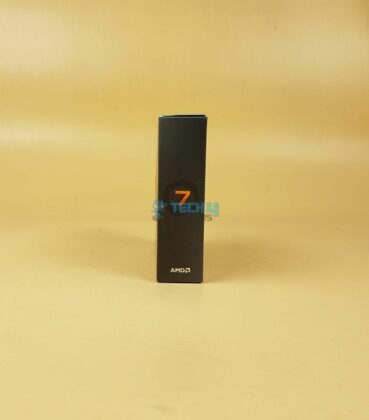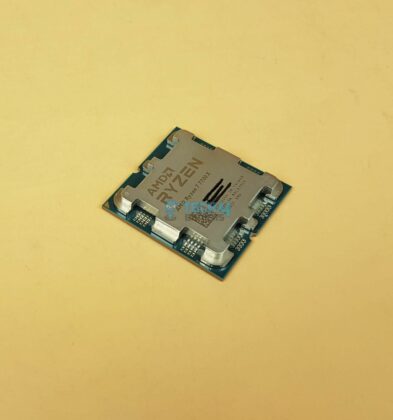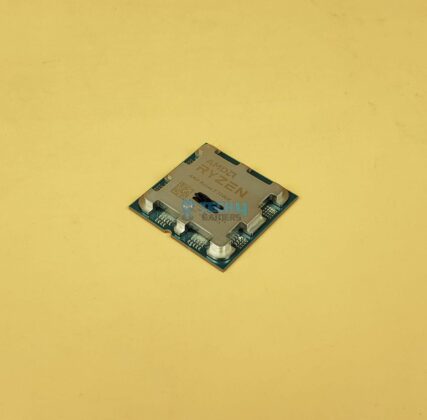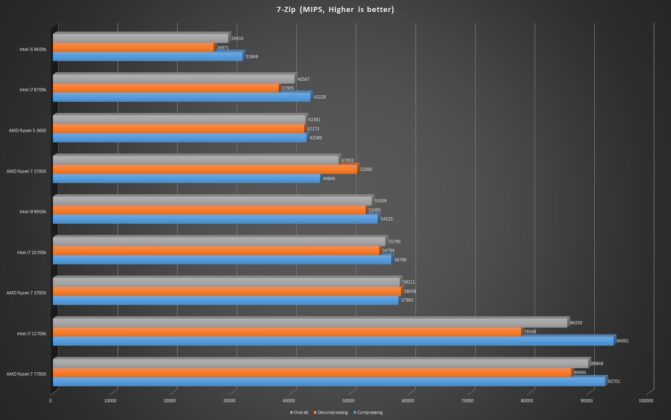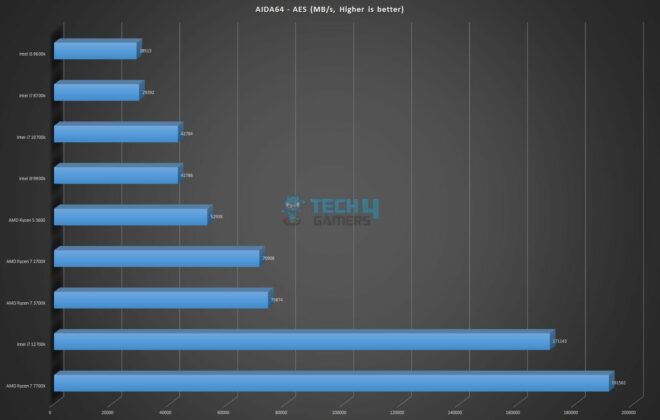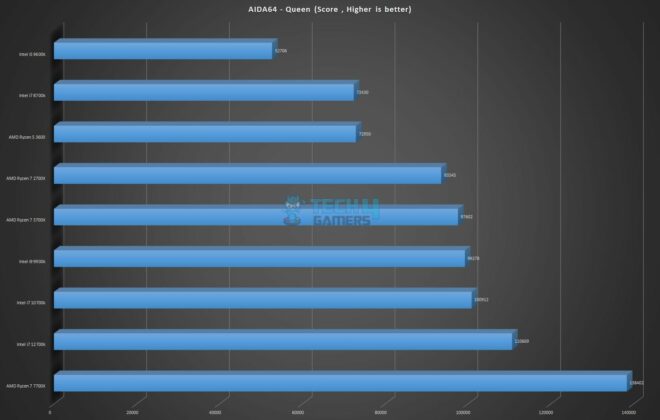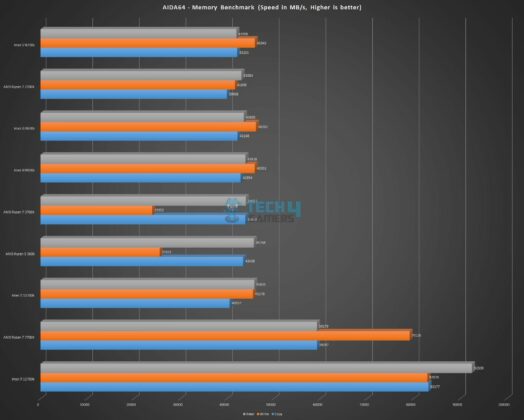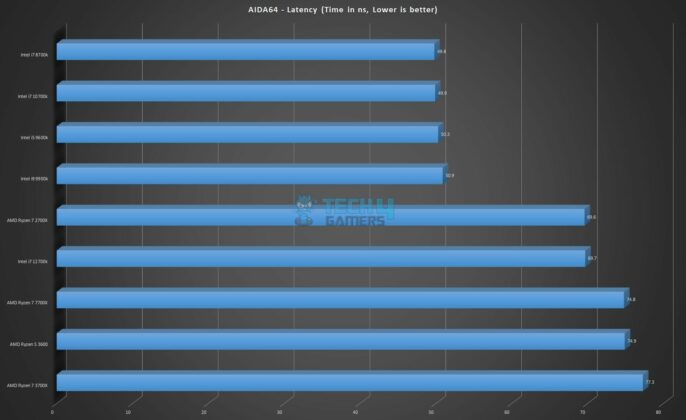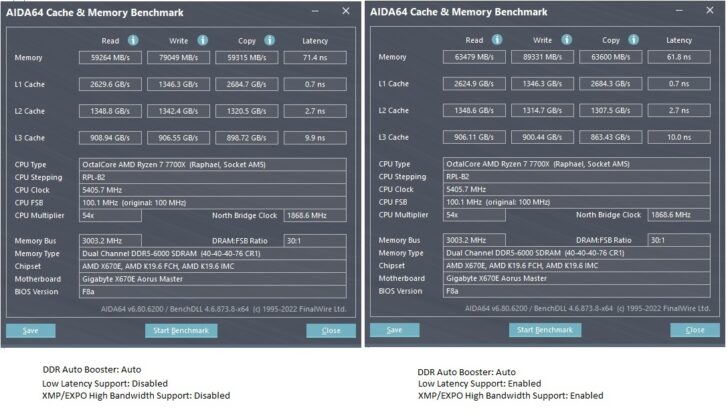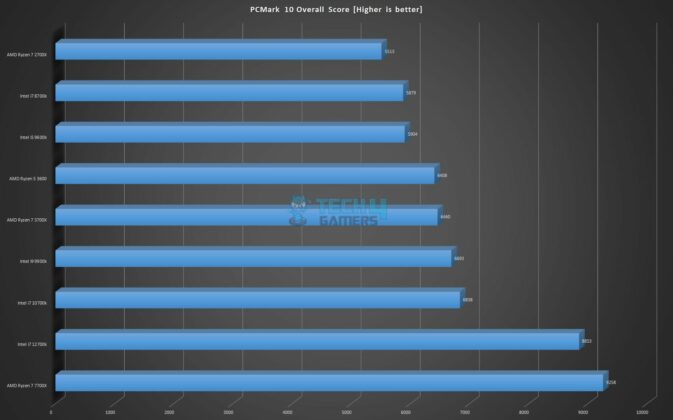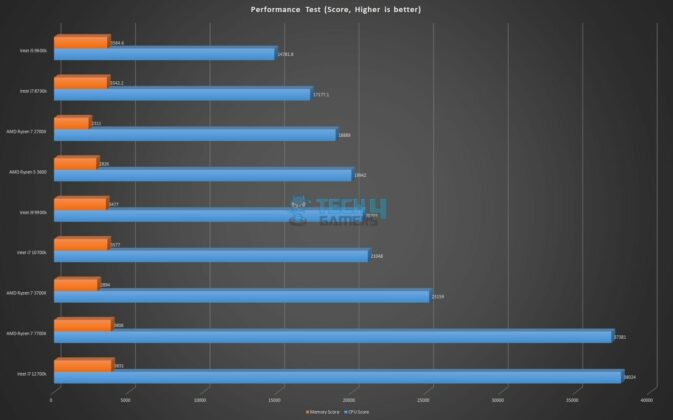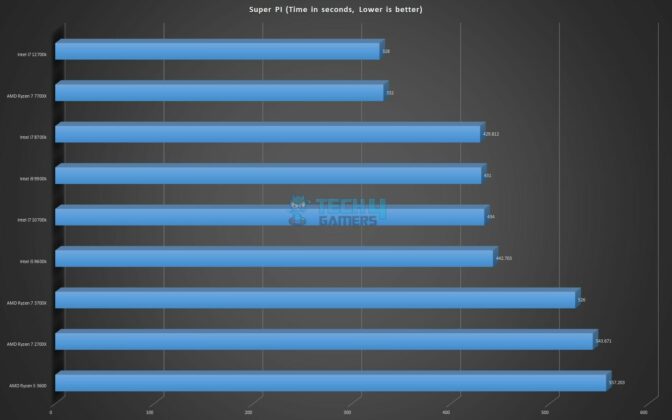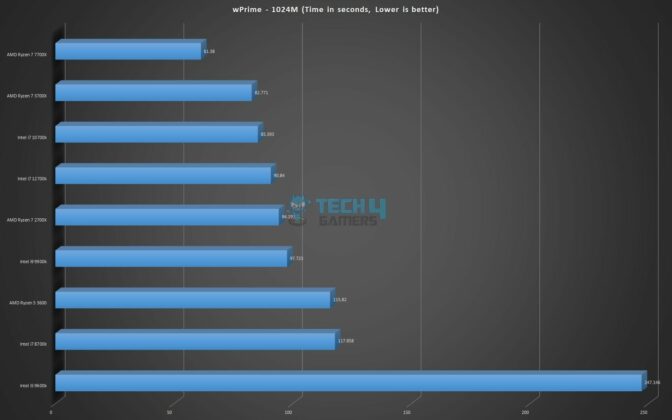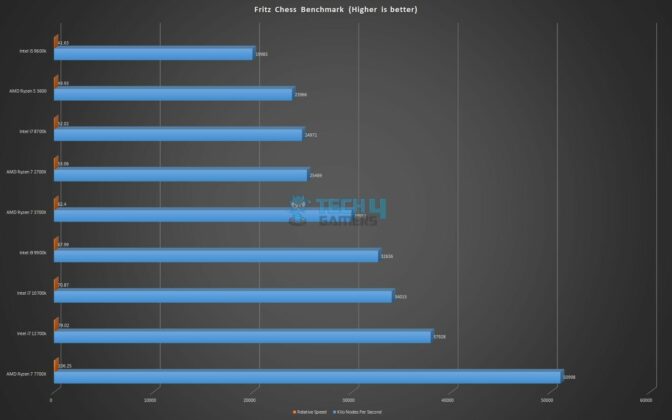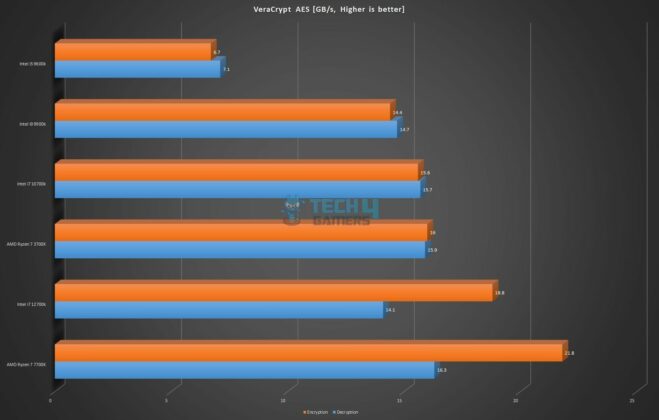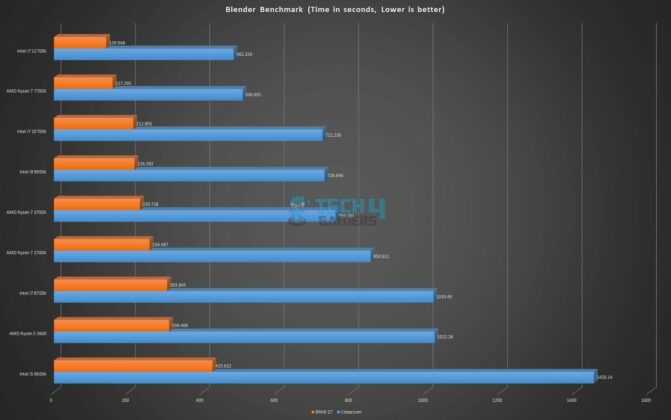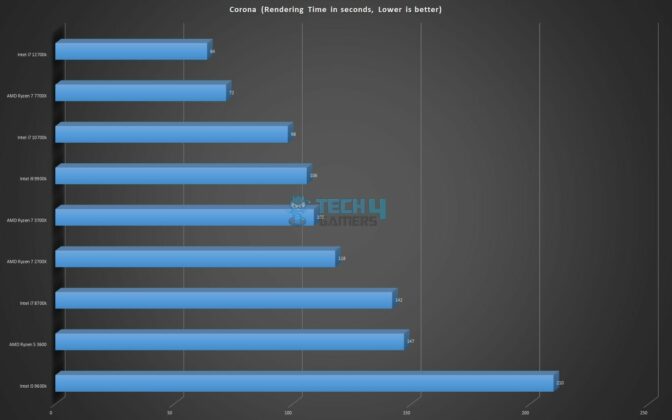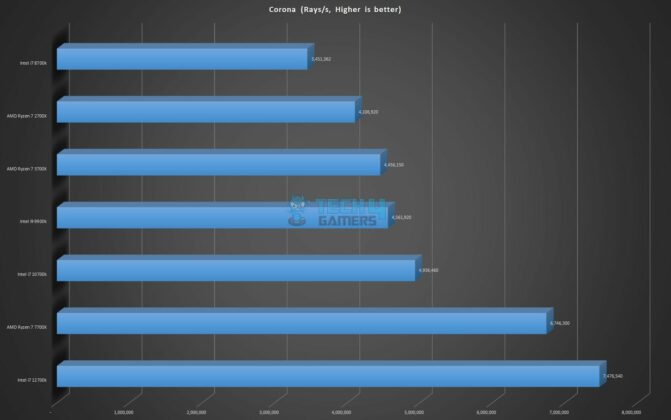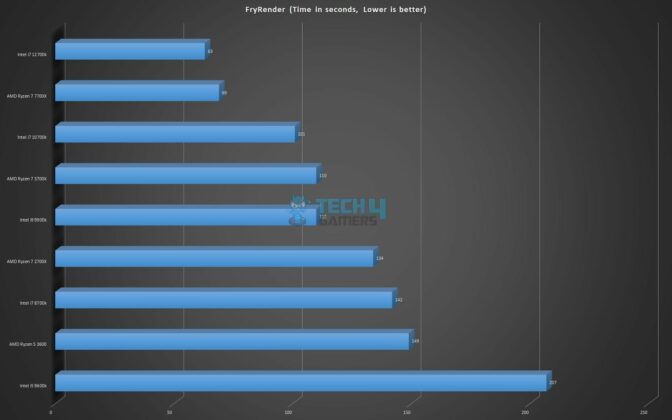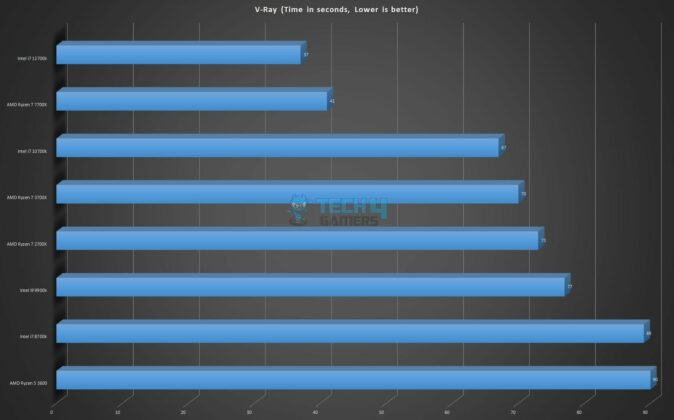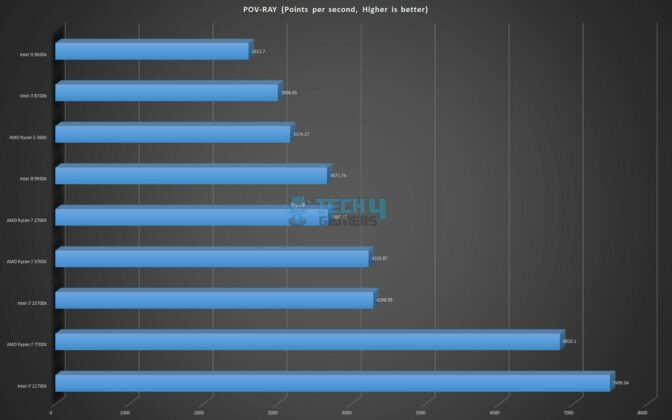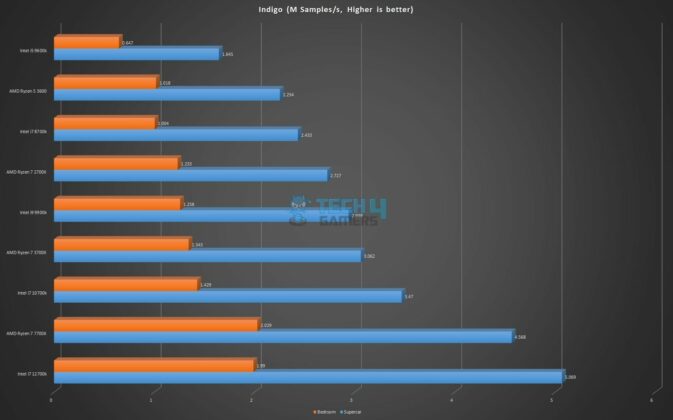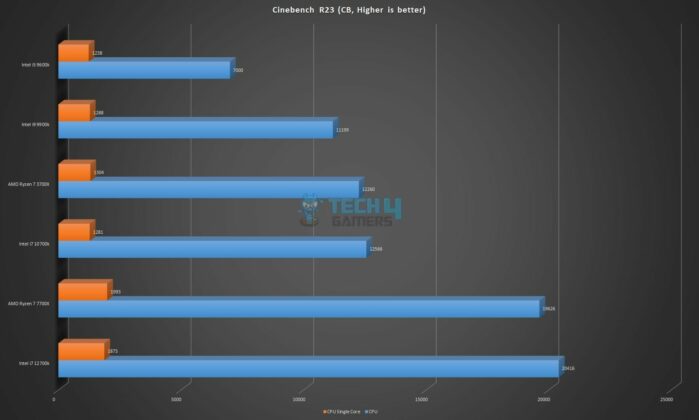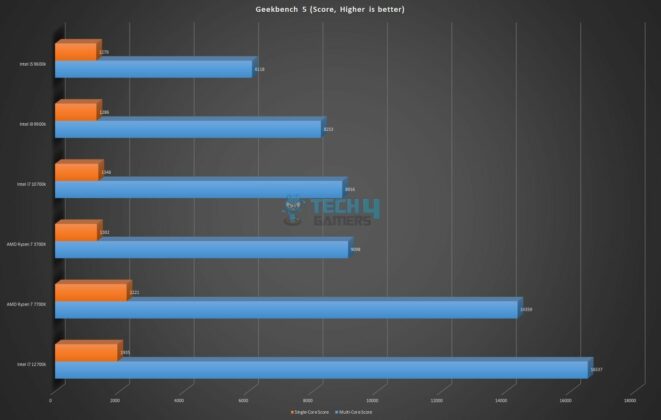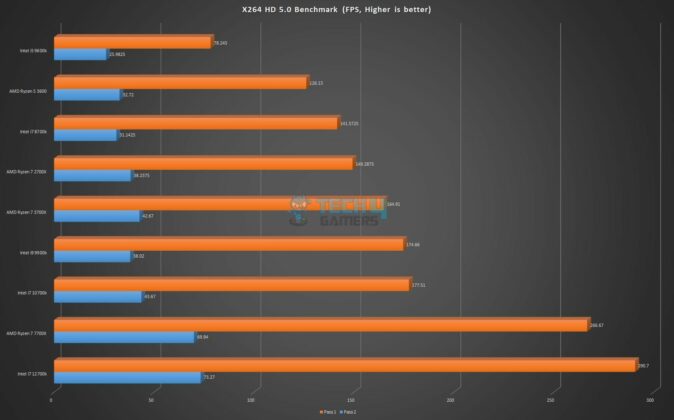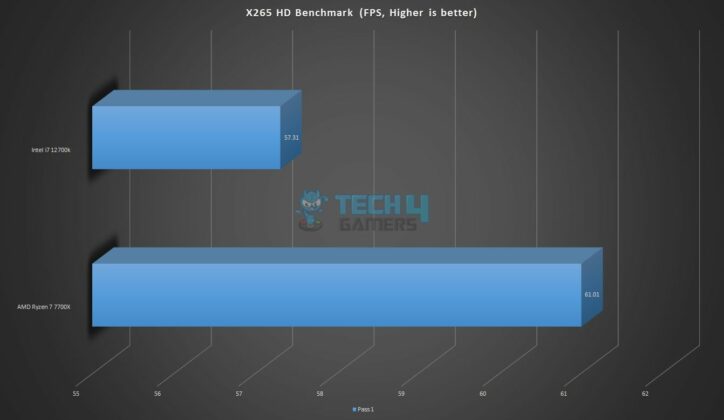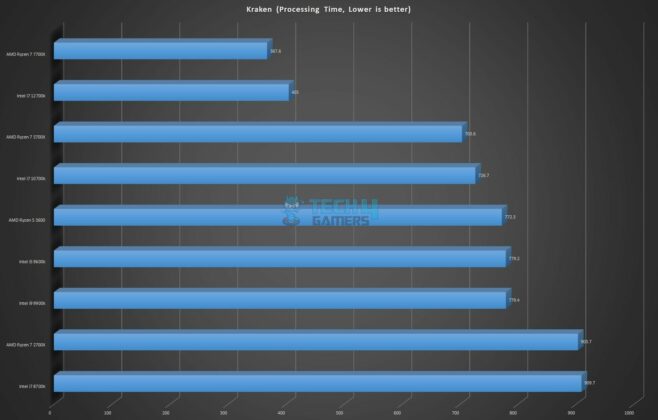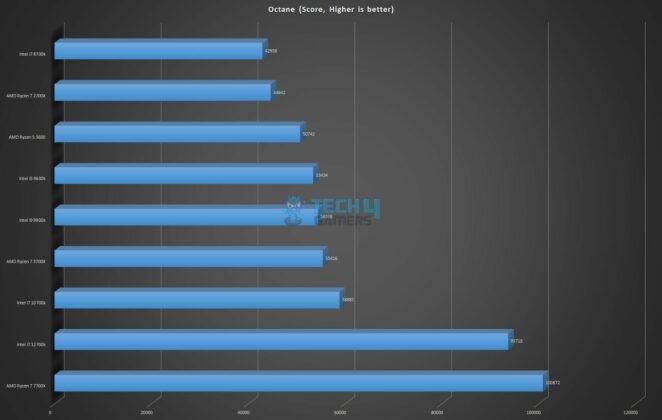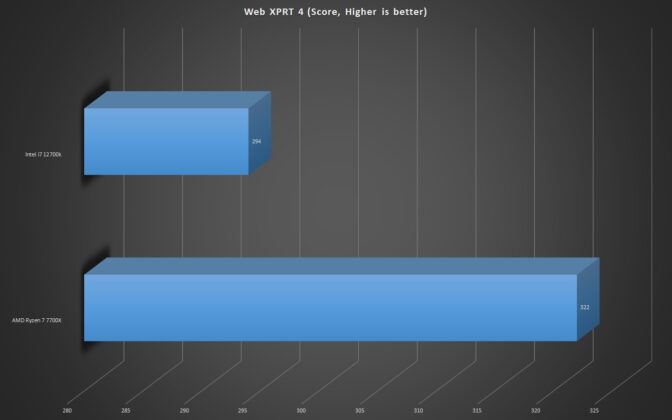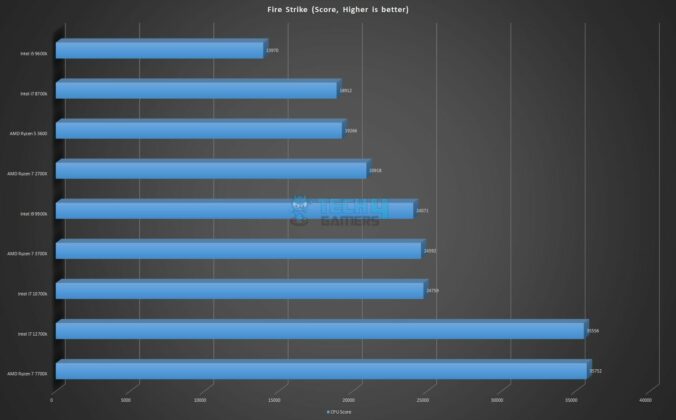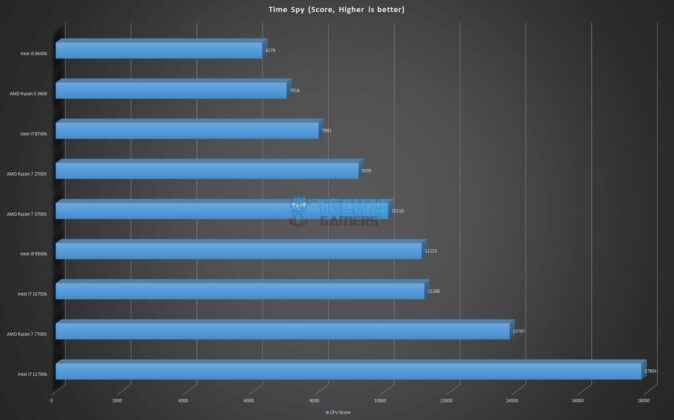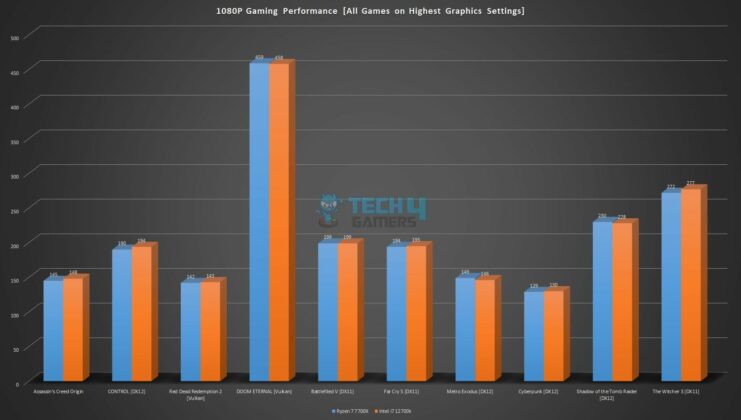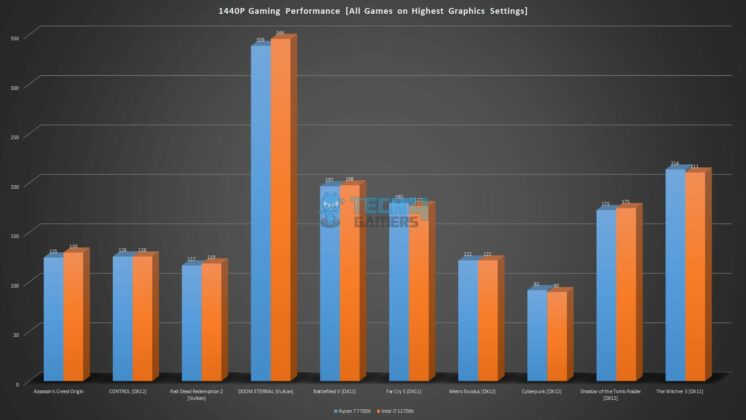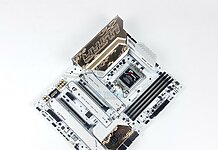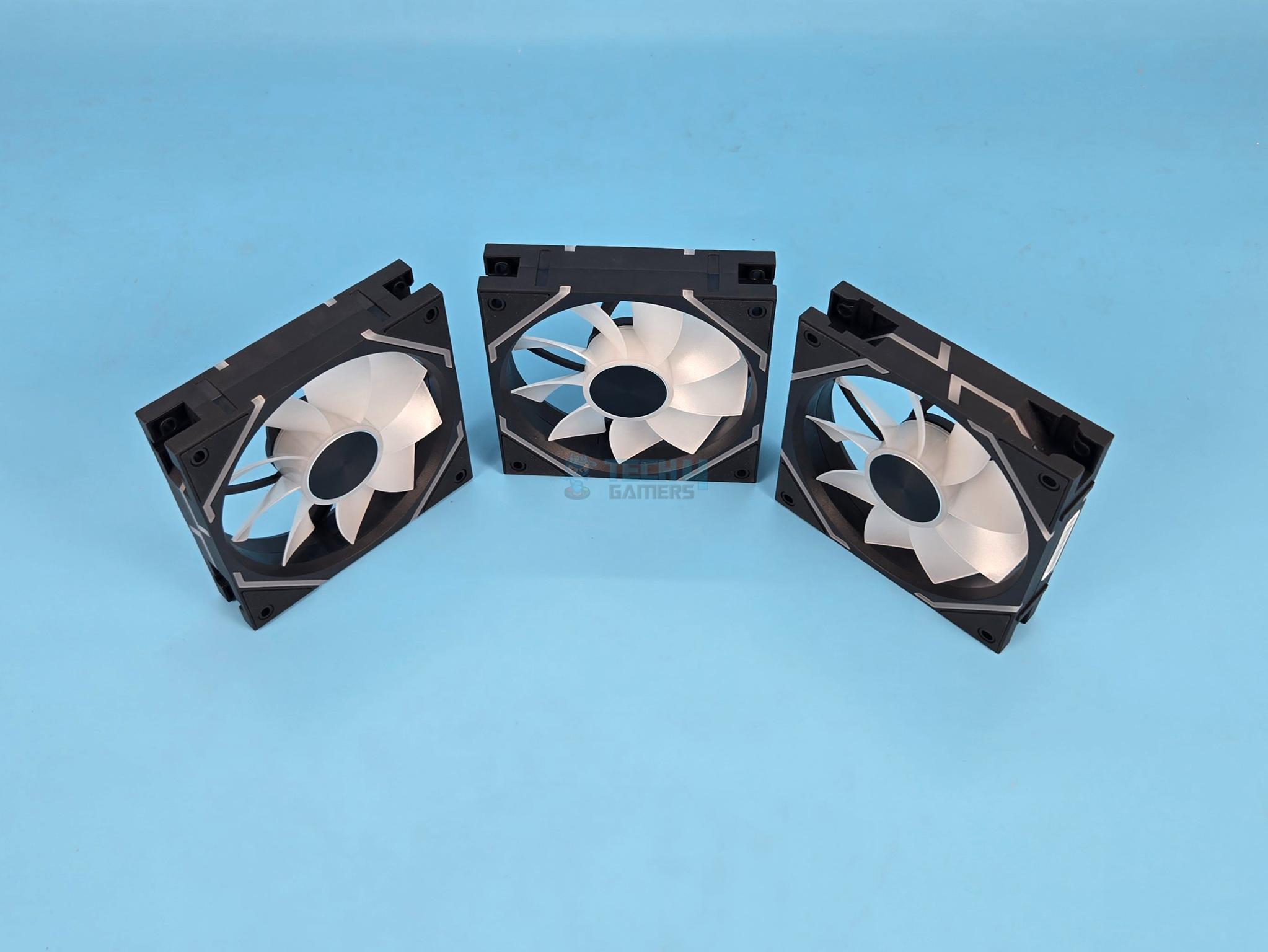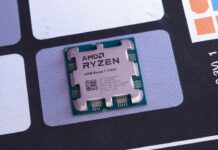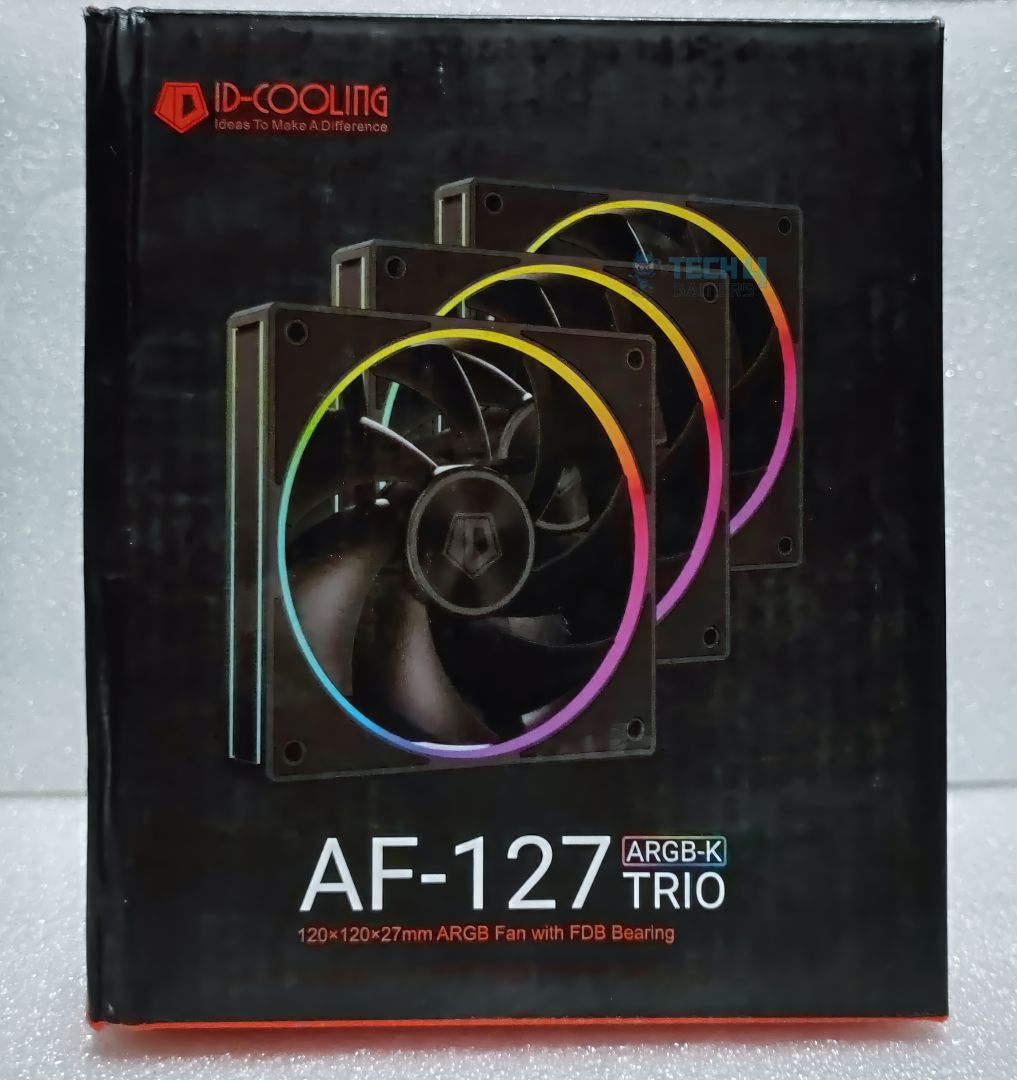Ryzen 7 7700x Review
Verdict
ZEN4 is undoubtedly the future. AMD’s CPUs are scaling impressively, even in single-core performance. Assuming thermal issues are addressed as the manufacturer claims, this platform is a future-proof investment. It’s likely to support the next generation of CPUs for the next 5 years. The Ryzen 7 7700X is a well-rounded processor, excelling in gaming and heavy workloads. AMD might want to reconsider pricing for the new platform, paired with DDR5 memory, to make it even more appealing.
Hours Tested: 18-20
Overall
-
Overall Performance - 9/10
9/10
-
Value - 7.5/10
7.5/10
-
Thermal Performance: 7.0 - 7/10
7/10
-
Overclocking - 8.5/10
8.5/10
Pros
- Strong Single Core Performance
- Efficient Processor
- iGPU
- Higher Sustained Clocks on all cores
- Scales well
- DDR5 Support
- PCIe 5.0 Support
- AMD EXPO Support
Cons
- High Thermals
- Expensive
AMD has finally launched the Ryzen 7000 series with ZEN4 architecture, and it’s a whole new platform. We’re saying farewell to the old CPU pins because now it’s an LGA socket with 1718 pins called Raphael AM5. The ZEN4 platform exclusively supports DDR5, which is a logical choice. However, it’s worth noting that the competition offers both DDR4 and DDR5, making AMD’s DDR5-only approach an interesting move. Today, I’ll be taking a look at the mid-range Ryzen 7 7700X.
Key Takeaways
- The Ryzen 7 7700X is designed for users looking for a processor for their mid-range build.
- The Ryzen 7 7700X is not for anyone who already owns a DDR4 kit.
- The Ryzen 7 7700X comes with support for DDR5 memory, increased clock speeds, as well as an improved architecture.
AM5 Socket
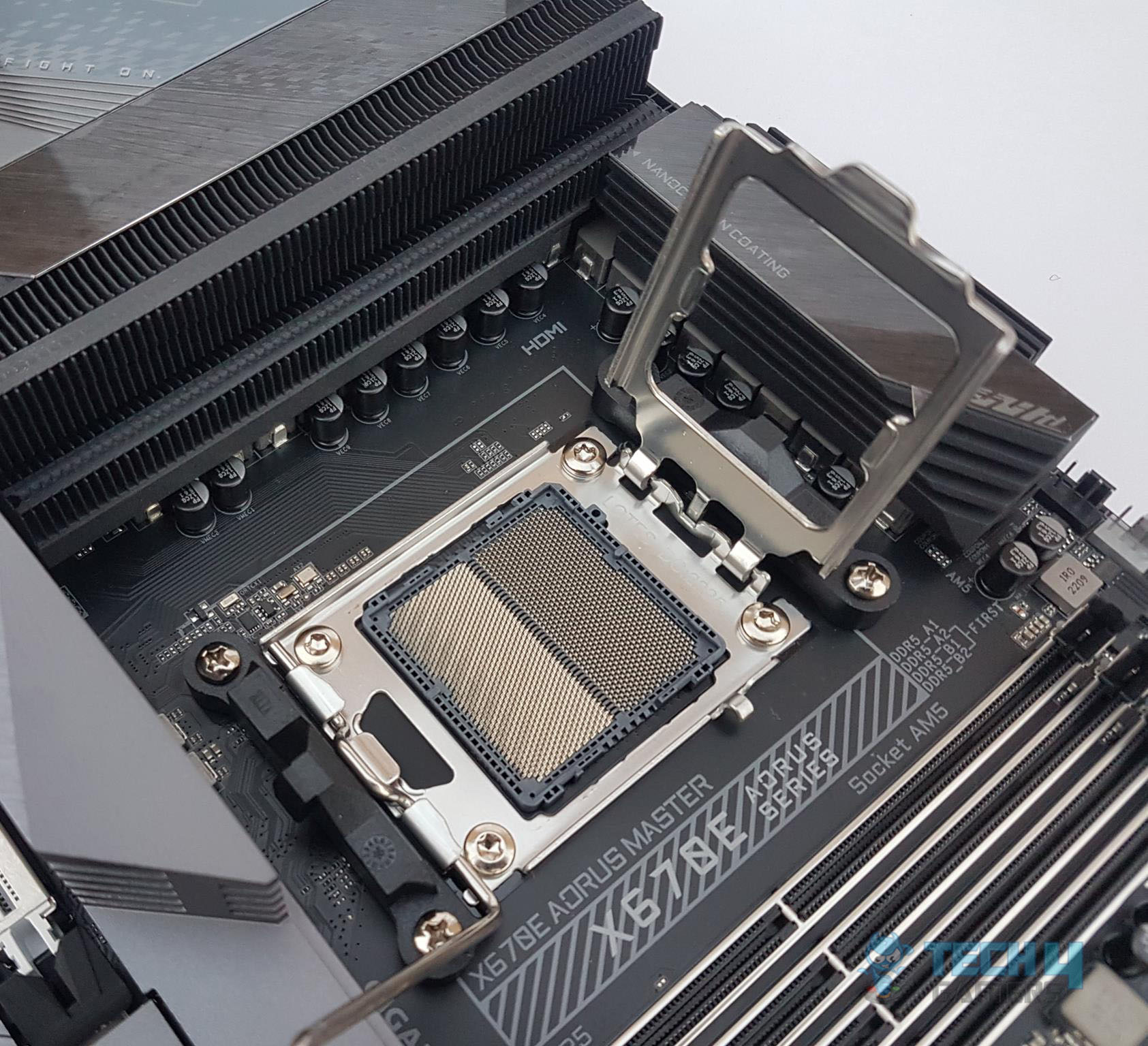
The above picture shows an AM5 socket on the GIGABYTE X670E AORUS MASTER motherboard.
Here are the specifications.
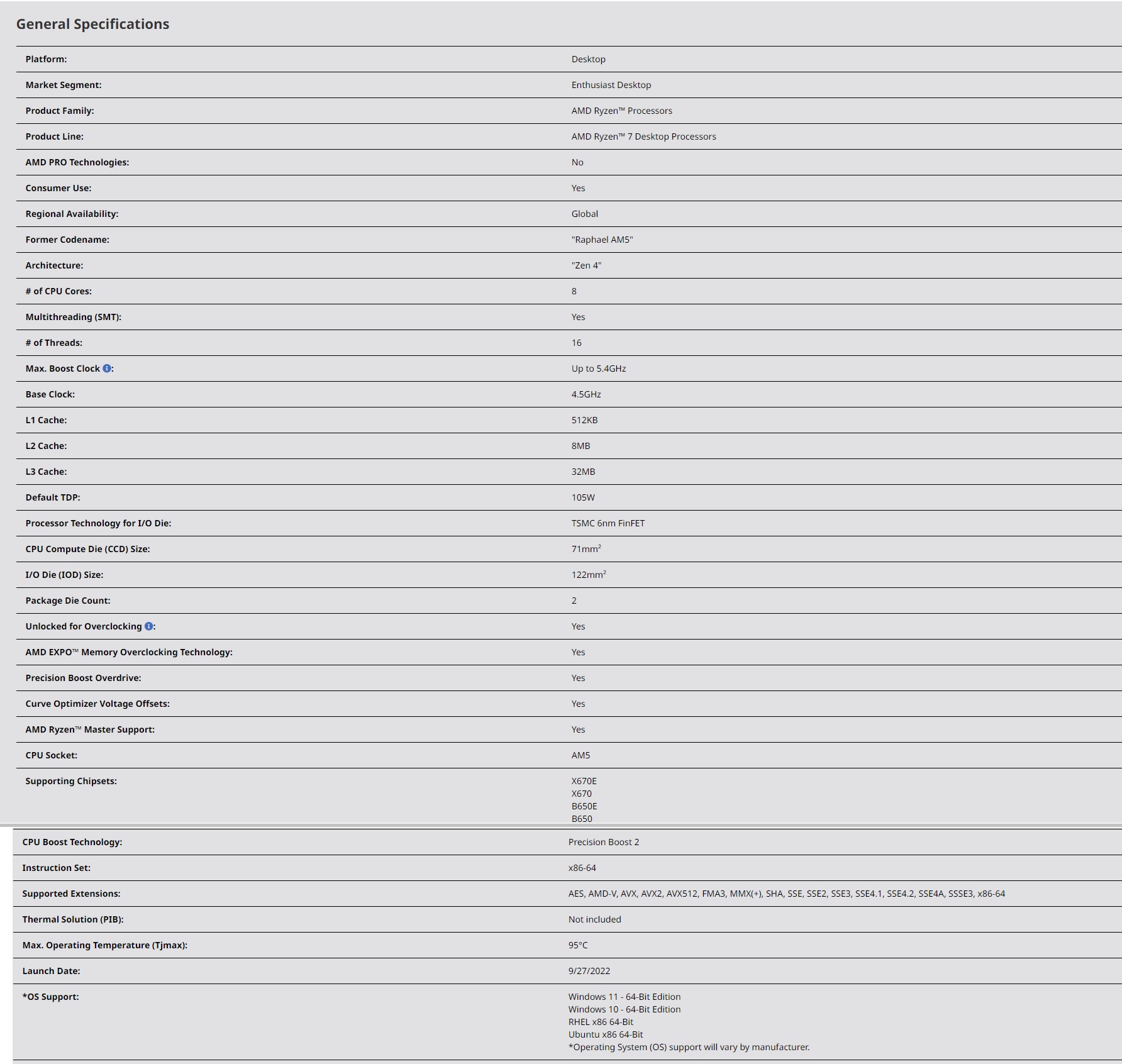
The Ryzen 7 7700X is an 8-core, 16-thread CPU, boasting a base clock of 4.5GHz and a turbo boost up to 5.4GHz, depending on thermal and power conditions. L1 cache is 512KB, L2 cache 8MB, and L3 cache 32MB. It features a 2-core graphics unit with a base clock of 400MHz and a boost clock of 2200MHz. No cooler is included. Its max thermal junction is 95°C, and the default TDP is 105W, which is different from socket power (PPT).
Packing Box
Complete unboxing of the Ryzen 7 7700X.
These CPUs support dual-channel memory configuration. Here is a table showing the supported DDR5 speeds:
| Module CountxRank | Supported Speed |
| 1x1R | 5200 MT/s |
| 1x2R | 5200 MT/s |
| 2x1R | 3600MT/s |
| 2x2R | 3600MT/s |
Our sample was boosted to 5.4GHz out of the box.
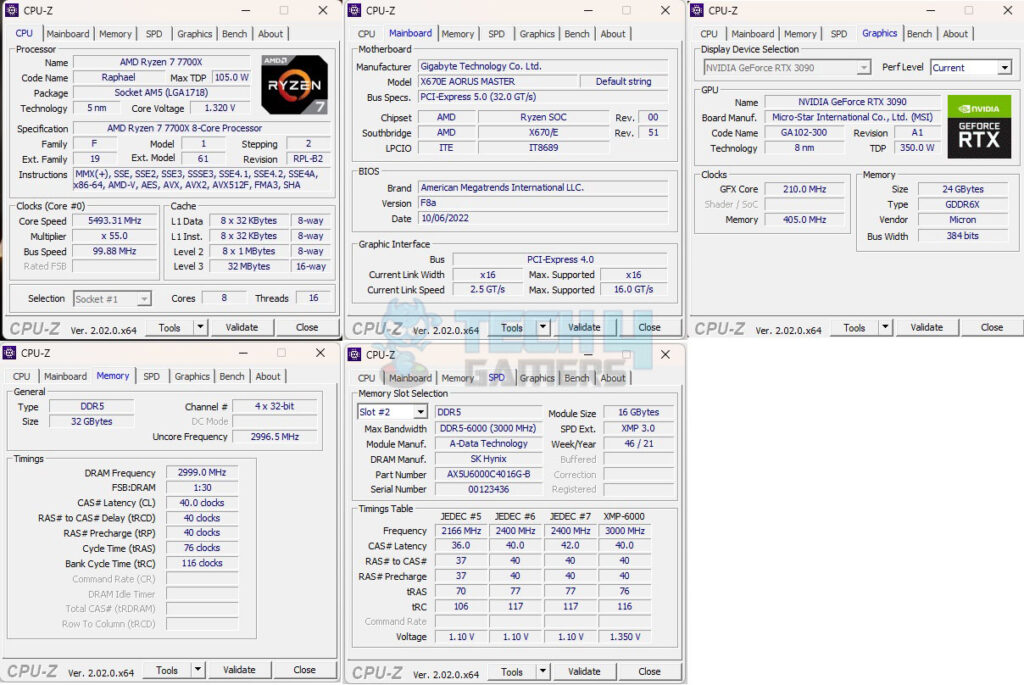
The above picture shows the CPU-Z run from the system.
Testing
Following is the configuration of the test benches that have been used for this content.
| Platform | AMD X670E | Intel Z690 | Intel Z390 | Intel Z390 | Intel Z370 | Intel Z490 | AMD X470 | AMD X570 |
|---|---|---|---|---|---|---|---|---|
| CPU | Ryzen 7 7700X | i7 12700k | i5 9600k | i9 9900k | i7 8700k | i7 10700k | Ryzen 7 2700X | AMD Ryzen 7 3700X |
| Mobo | X670E AORUS MASTER | Z690 AERO G | Strix Z390-E | Strix Z390-E | Ultra Durable Z370-HD3 | MAG Z490 TOMAHAWK | Strix X470-F Gaming | X570 Aorus Pro |
| RAM | XPG Lancer RGB 32GB 6000MHz Kit | XPG Lancer RGB 32GB 6000MHz Kit | 16GB @ 3000MHz | 16GB @ 3000MHz | 16GB @ 3000MHz | 16GB @ 3000MHz | 16GB @ 3000MHz | 16GB @ 3000MHz |
| SSD | Sabrent Rocket 4 Plus 2TB NVMe SSD | Sabrent Rocket 4 Plus 2TB NVMe SSD | HyperX 120GB SSD | Samsung 840 EVO 1TB SSD | Samsung 840 EVO 1TB SSD | Samsung 840 EVO 1TB SSD | Samsung 840 EVO 1TB SSD | Samsung 840 EVO 1TB SSD |
| GPU | MSI GeForce RTX 3090 Gaming X Trio | MSI GeForce RTX 3090 Gaming X Trio | GTX 1080 | GTX 1080 | GTX 1080 | GTX 1080 | GTX 1080 | GTX 1080 |
| AIO | DeepCool LS720 | DeepCool LS720 | Asus Ryujin 360 | EK-AIO 240 D-RGB | Asus Ryujin 360 | EK-AIO 240 D-RGB | Asus Ryujin 360 | Asus Ryujin 360 |
Special note to thank our sponsors namely: AMD, ASUS, GIGABYTE, MSI, Sabrent, DeepCool, be quiet!, Intel, and ANTEC.
Methodology
The following was ensured for each test:
- Each test is done on the Auto and Stock settings.
- Default tweaking/performance enhancement options are disabled in the BIOS.
- XMP is loaded for each test. DRAM timings and Voltage are set manually.
- All other voltages are left at Auto.
- The pump and fans of the AIO are made to run at 100% during the testing.
- Games are benched on the stock clocks.
- The overclocking results of the processor under discussion are shown.
- The Graphics card is not overclocked.
- The motherboards’ BIOS is updated to their latest.
- Nvidia’s driver 517.48 is used.
- HWinfo64 is used to monitor the sensors.
- Each game was tested on maxed setting using the built-in benchmark utility where available and the MSI After Burner was used to record the FPS from the actual gameplay.
The testing was done on Microsoft Windows 11 x64 version 22H2.
General Tests
Rendering Tests
We have run multiple rendering tests for evaluation. The results of these tests are mostly the rendering time and frames per second unless stated otherwise. Lower time and higher FPS are what we are looking for.
Transcoding
We have used X264 HD and X265 HD Benchmarks to measure the transcoding performance of the CPU.
Web-based benchmarks
Just to give an idea of how the CPUs impact general web browsing, we ran a few benchmarks.
Gaming Benchmarks
Let’s start with the synthetic benchmarks. For this purpose, We have used 3DMark Fire Strike and Time Spy benchmarks.
Frequency
The AMD Ryzen 7 7700X has a base clock of 4.5GHz and a turbo frequency of up to 5.4GHz. Please, keep in mind that this turbo frequency is for a single core only depending upon the load type and there is a multitude of variables that could affect this turbo frequency. For example, the thermal headroom, power limit, cooling solution, thermal paste application, how good a motherboard is, etc.
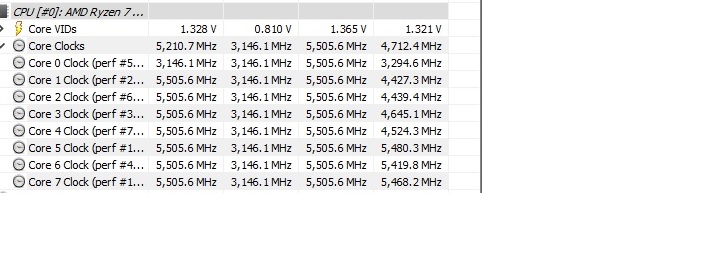
Our sample was boosted to 5.4GHz out of the box. On a few occasions but repeatedly it boosted to 5.5GHz which is very good. Who would not want an extra 100MHz without any tweaking? The above snapshot from the HWInfo64 was taken after a run of Cinebench R23 single-core run.
What is more stunning are the sustained clocks across all cores under the multi-load run. Our sample has been doing 5.1GHz approximately on all cores under the Cinebench R23 CPU run of 30 minutes, Blender run. This is an impressive performance and a good gain over the previous Ryzen generation. But AMD has done this in a way, which is actually letting it down. We are covering this in the next section.
Thermals and Power
We have tested the AMD Ryzen 7 7700X on the GIGABYTE X670E AORUS MASTER motherboard with the latest BIOS update. For one thing, we are sure that the motherboard being a beefy design will push the CPU to its brink for maximum performance. From the cooling perspective, we have used the latest AIO from DeepCool which is LS720. Thermal paste is Noctua NT-H1. In that we have covered three aspects:
- Powerful Motherboard
- Powerful Cooling
- A good thermal paste
AMD with the ZEN4 has designed the chips so that they will reach their Tj max immediately i.e the chips will run at 95°C under a heavy workload. According to AMD, this is by design and it will not impact the longevity of the CPU. AMD has taken the thermal limit out of the overall equation. With CPUs hitting their thermal limit, the only limiting factor would be the power which is defined by three variables:
- Max Socket Power (PPT): 142W for 7700X
- Max Current (EDC): 170A for 7700X
- Max Current Thermally Limited (TDC): 110A
These settings are for the Ryzen 7 7700X and 7600X.
This is something that is not warmly welcomed by the community and this is why we have said AMD has done this in a way, which is letting it down. What the users should know is that AMD is loud and clear that this is by design and that the Eco mode can be utilized to realize power saving which would also result in better thermals. More on this in the next section.
We left the system idle for like 30 minutes and used HWInfo64 to monitor the thermals and power usage.
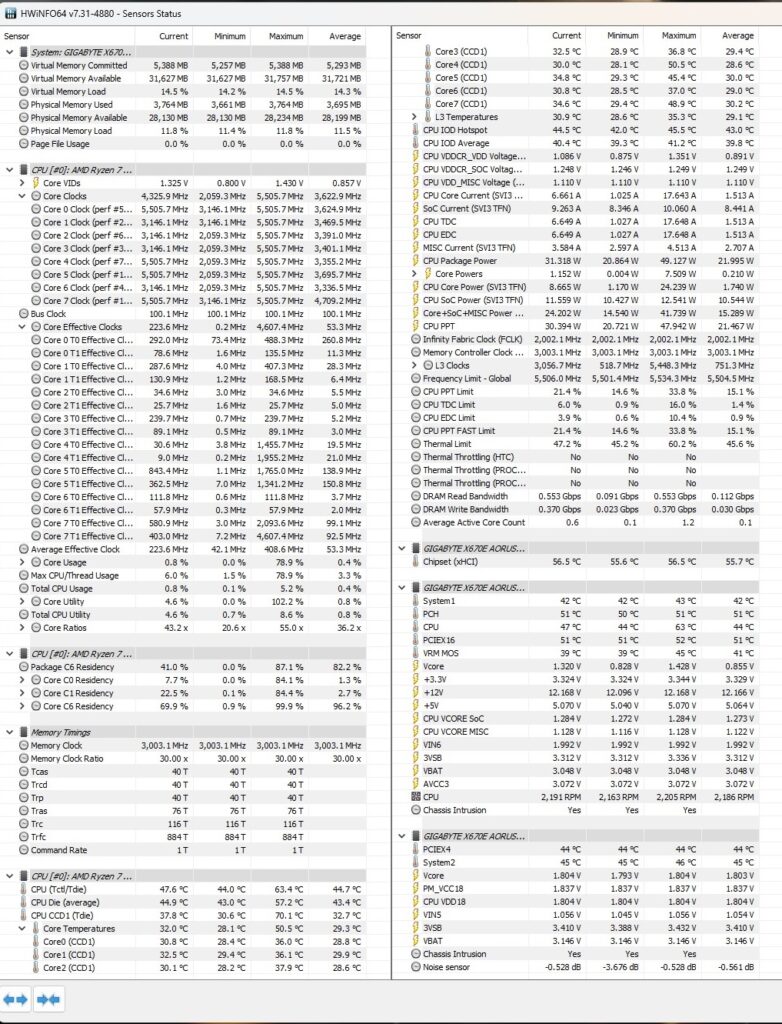
As can be seen in the above picture, the minimum temperature was 30°C (Tdie only) at an ambient of 27°C, and the minimum package power was 20.864W. We have no complaints over here. The minimum frequency was 2.1GHz on any core during idling. The stats are good.
Next, we run a Cinebench R23 30-minute run on the CPU and monitor the stats using the HWInfo64.
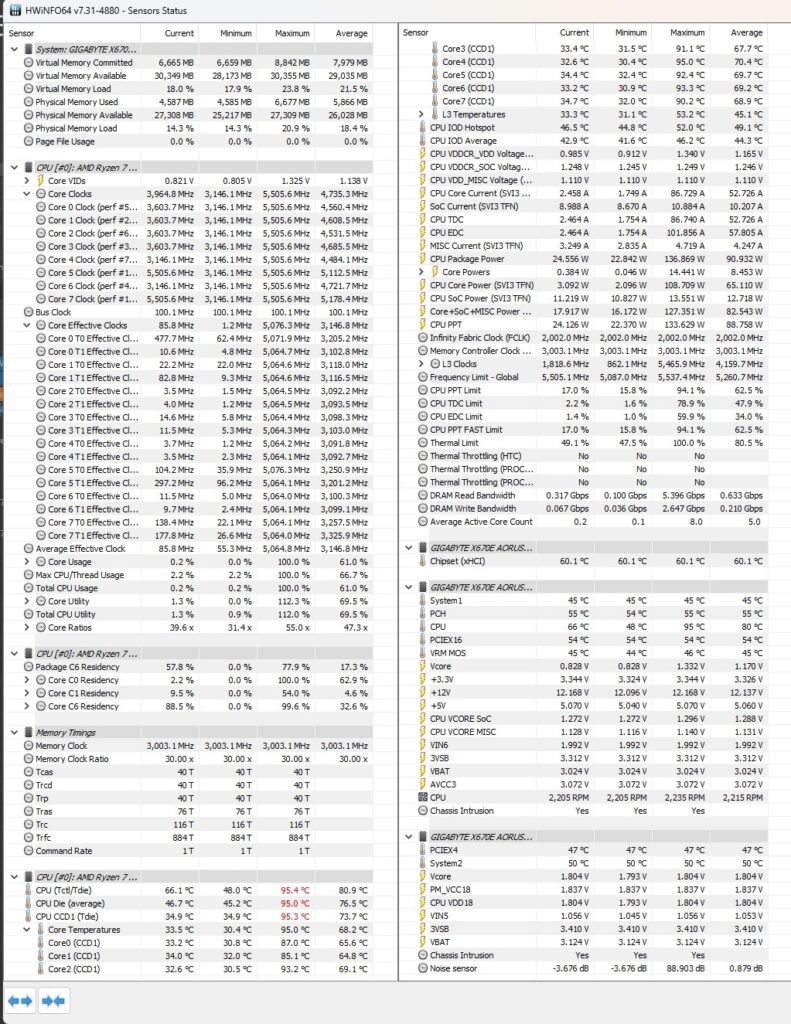
The temperature immediately peeked at 95°C which is by design.
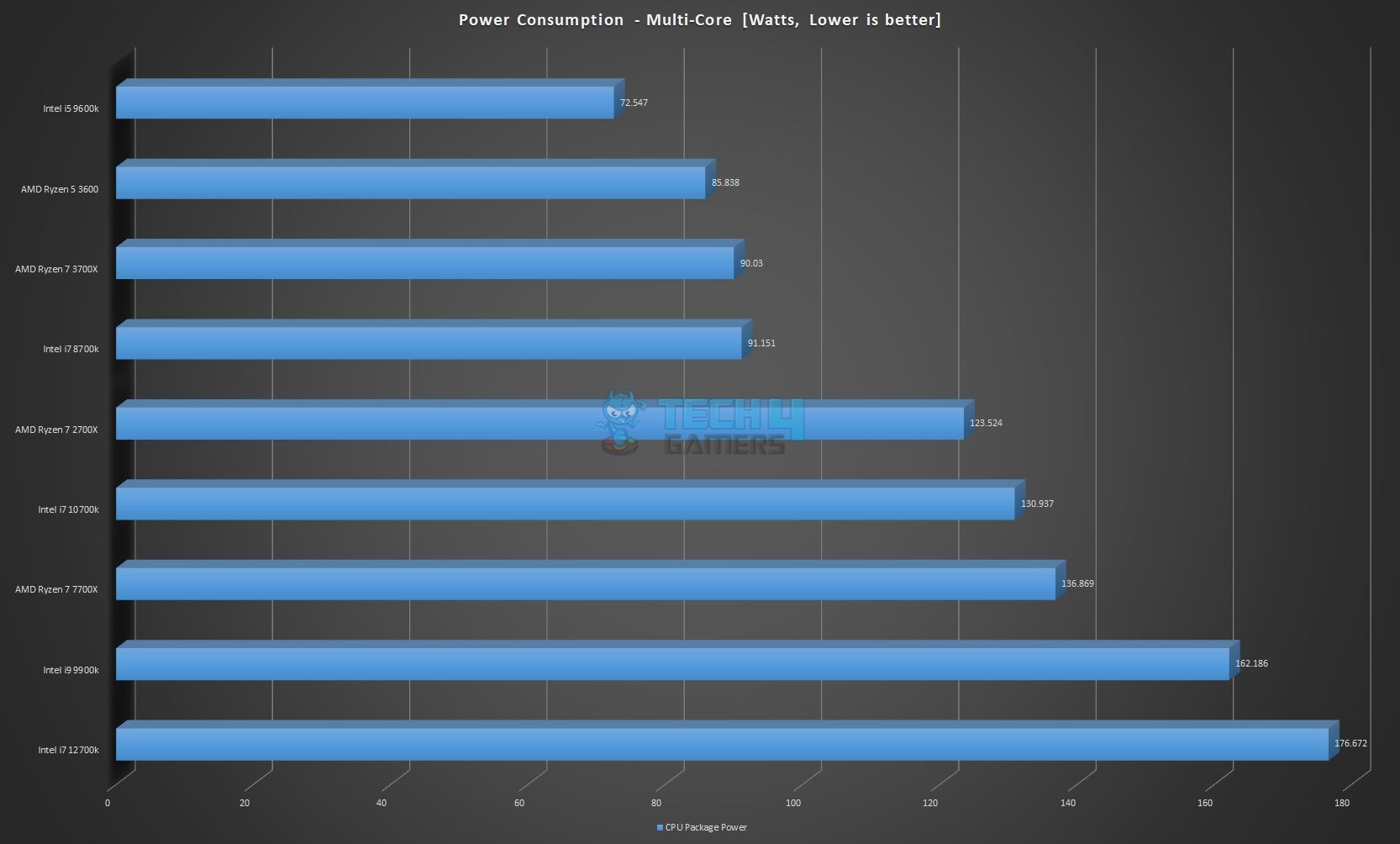
The power draw on the CPU package was 136.869W. The VCore on Auto was 1.332V.
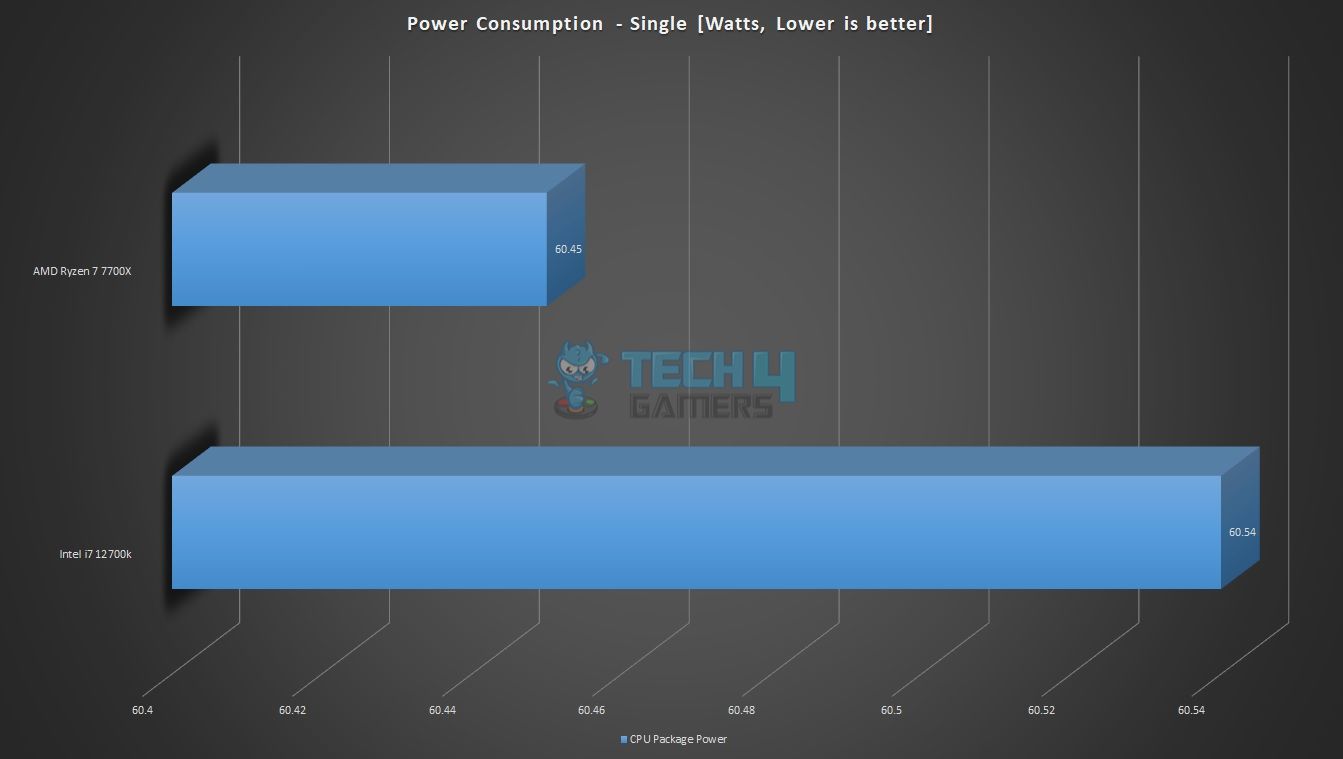
We also monitored the power usage on the single-core load using Cinebench R23. Both CPUs were drawing the same power on the Package. Please note that single-core load does not use E-Cores on the Intel i7 12700k (in Windows 11).
Overclocking or Fine Tuning
Since our sample was already achieving 5.1GHz across all cores under heavy multi-load, overclocking all cores to 5.1GHz manually did not give us any betterment. However, 5.2GHz on all cores was never a satisfactory experience.
We decided to play with the AMD ECO Mode instead and tried to determine the level of power settings which not resulted in improved thermals but no loss in performance. AMD Eco Mode allows the user to configure their processor to adhere to a lower TDP. For example, a 105W TDP chip moves to 65W TDP, or a 170W TDP chip moves to 105W TDP. Please note that there is no dedicated, single-click option in the UEFI/BIOS to enable the Eco Mode.
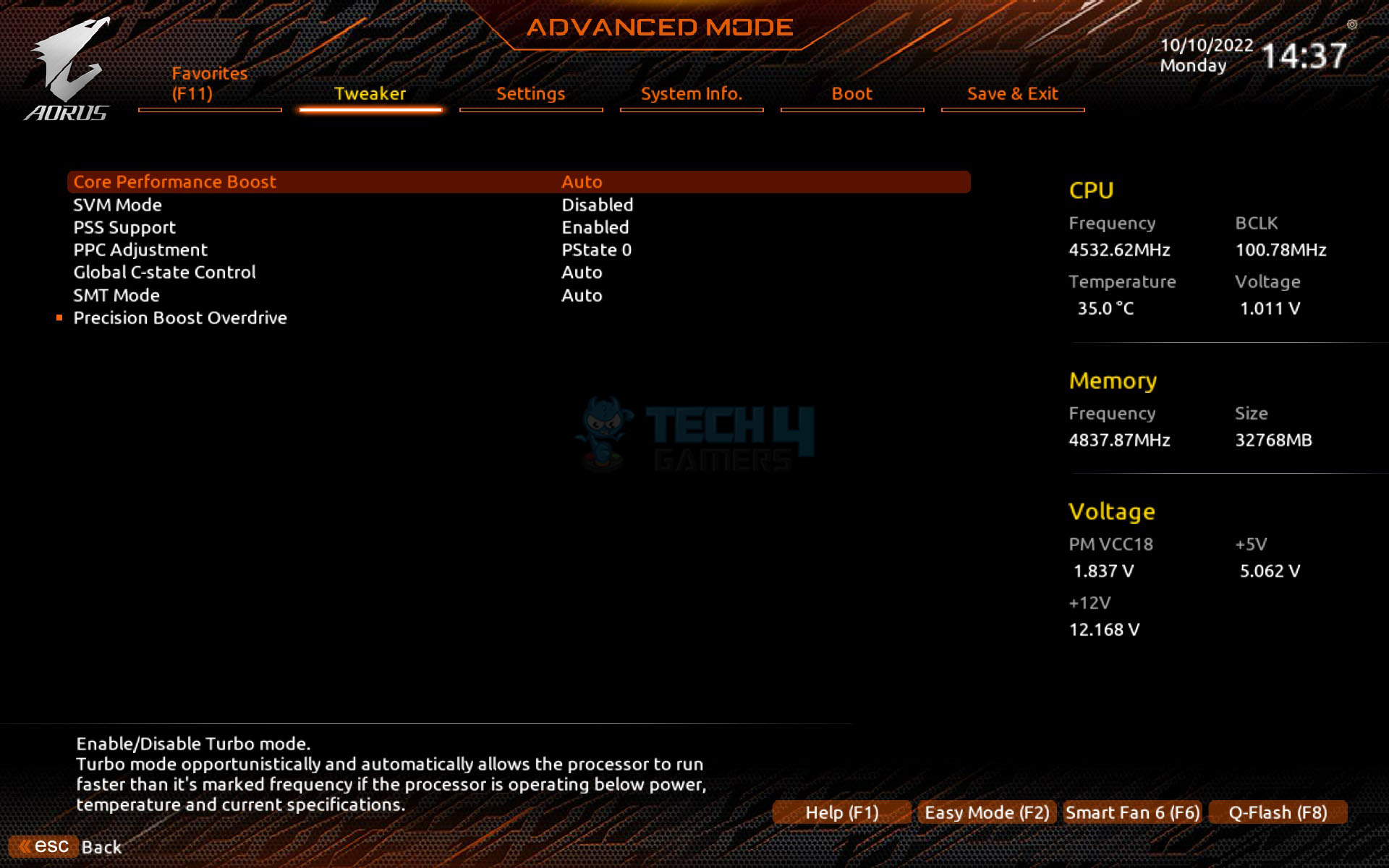
The relevant settings are located under the Precision Boost Overdrive in the CPU Advanced Options. You need to enable the Efficiency Curve. However, there is a change this time around. We are not using mV values for the adjustments, instead, there is a count that needs to be entered in a positive or negative offset. Select Negative for all cores and start playing with the maximum value of 30. This would depend on how good silicon you have got.
After that, you need to remove the AMD’s power limits and start playing with the PPT (Socket Power). This in tandem with the efficiency curve adjustment would yield some good results. This is a time taking process so patience is your virtue.
For each change, we have tested the Cinebench R23 to see if there is any performance hit or gain. This was then tested further for stability.
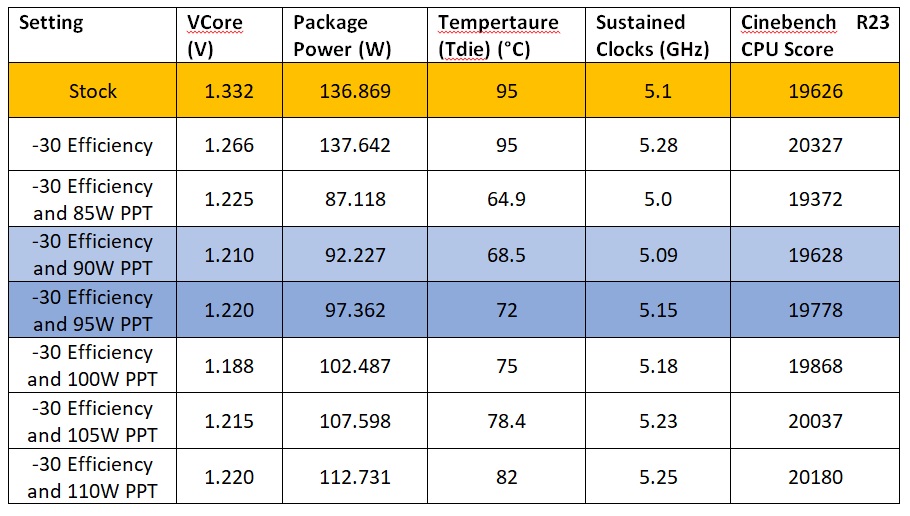
I left the VCore on Auto settings since it adjusts itself based on the efficiency curve, which worked well for me. After some testing, I found that setting a -30 offset on the efficiency curve and a PPT of 90W to 95W were the optimal settings for my CPU. These settings provided lower thermals, excellent stability, and sustained clocks on all cores. I achieved slightly better results compared to the Stock settings. It’s a win-win scenario for me.
For those interested, here are the AMD-recommended TDP settings that you can input in the UEFI/BIOS to save power on a high TDP chip.
- 65W TDP = 88000 PPT; 75,000 TDC; 150,000 EDC
- 105W TDP = 142,000 PPT; 110,000 TDC; 170,000 EDC
- 170W TDP = 230,000 PPT; 160,000 TDC; 225,000 EDC
Should You Buy It?
Our rigorous testing of the processor has allowed us to note a few points you should take into account before purchasing the Ryzen 7 7700X.
Buy It If:
✅You want a capable mid-range CPU: With 8 cores, 16 threads, and a high boost clock speed, the Ryzen 7 7700X is undeniably an extremely capable processor that is capable of accommodating GPUs like the 4080 and the 4090.
✅You intend a future-proof CPU: With PCIe Gen 5 and DDR5 memory support, the Ryzen 7 7700X is a future-proof processor.
✅You want an efficient processor: Throughout our tests, the Ryzen 7 7700X manages to impress us with its remarkable efficiency.
Don’t Buy It If:
❌You already own DDR4 memory: The Ryzen 7 7700X does not support DDR4 RAM modules.
❌You are looking for a cheaper processor: While the Ryzen 7 7700X is reasonably priced, anyone looking for a cheaper processor will have to look elsewhere.
Conclusion
I recently got my hands on AMD’s Ryzen 7 7700X, part of their 7000 CPU series. It’s an 8-core, 16-thread processor with a base clock of 4.5GHz and a turbo boost that can hit 5.4GHz. The TDP is 105W, and it can handle temperatures up to 95°C. Plus, it comes with a dual-core iGPU with a base clock of 400MHz and a boost clock of 2200MHz.
For this CPU, AMD recommends DDR5 6000MHz, and it handles FCLK adjustments automatically. You’ll need to focus on UCLK and MCLK settings. AMD EXPO offers high bandwidth and low latencies on this platform. One unique aspect is the IHS design with a thicker diffuser and cut-outs with SMDs on the PCB.
What’s impressive is the CPU’s out-of-the-box boost speeds, surpassing 5.0GHz. It even hit 5.5GHz in single-core performance. In multi-core tests, it maintained a solid 5.1GHz, which sets it apart from some Intel CPUs. The Ryzen 7 7700X operates at higher thermals, but ECO Mode lets you manage this. AMD provides suggested power settings for different TDP types.
I tested it against the Intel i7 12700K. The Ryzen 7 7700X showed efficiency in multi-core tasks and matched the i7 in single-core performance. Gaming performance was similar. However, there’s a catch. The CPU requires new motherboards using an LGA1718 socket (AM5) and X670/E or B650/E chipsets. The higher platform cost affects its popularity compared to Intel’s LGA1700, which supports both DDR4 and DDR5.
In conclusion, AMD’s move to stick with DDR5 is a good one, but cooler compatibility with AM5 may be a concern. To put it in a nutshell, as long as your cooler is using AMD’s stock backplate on AM4, it is compatible with the AM5, Period.
Awards Received By Ryzen 7 7700X
Here are the Tech4Gamers Awards received by the Ryzen 7 7700X after thorough testing.
Recent Updates
- October 24, 2023: Few text changes to improve readability.
Thank you! Please share your positive feedback. 🔋
How could we improve this post? Please Help us. 😔
Feedback By:
[Hardware Reviewer & Editor]
Meet Nauman Siddique, a highly experienced computer science graduate with more than 15 years of knowledge in technology. Nauman is an expert in the field known for his deep understanding of computer hardware.
As a tech tester, insightful reviewer, and skilled hardware editor, Nauman carefully breaks down important parts like motherboards, graphics cards, processors, PC cases, CPU coolers, and more.
- 15+ years of PC Building Experience
- 10+ years of first-hand knowledge of technology
- 7+ years of doing in-depth testing of PC Hardware
- A motivated individual with a keen interest in tech testing from multiple angles.
- I majored in Computer Science with a Masters in Marketing
- Previously worked at eXputer, EnosTech, and Appuals.
- Completed Course in Computer Systems Specialization From Illinois Tech


 Threads
Threads
